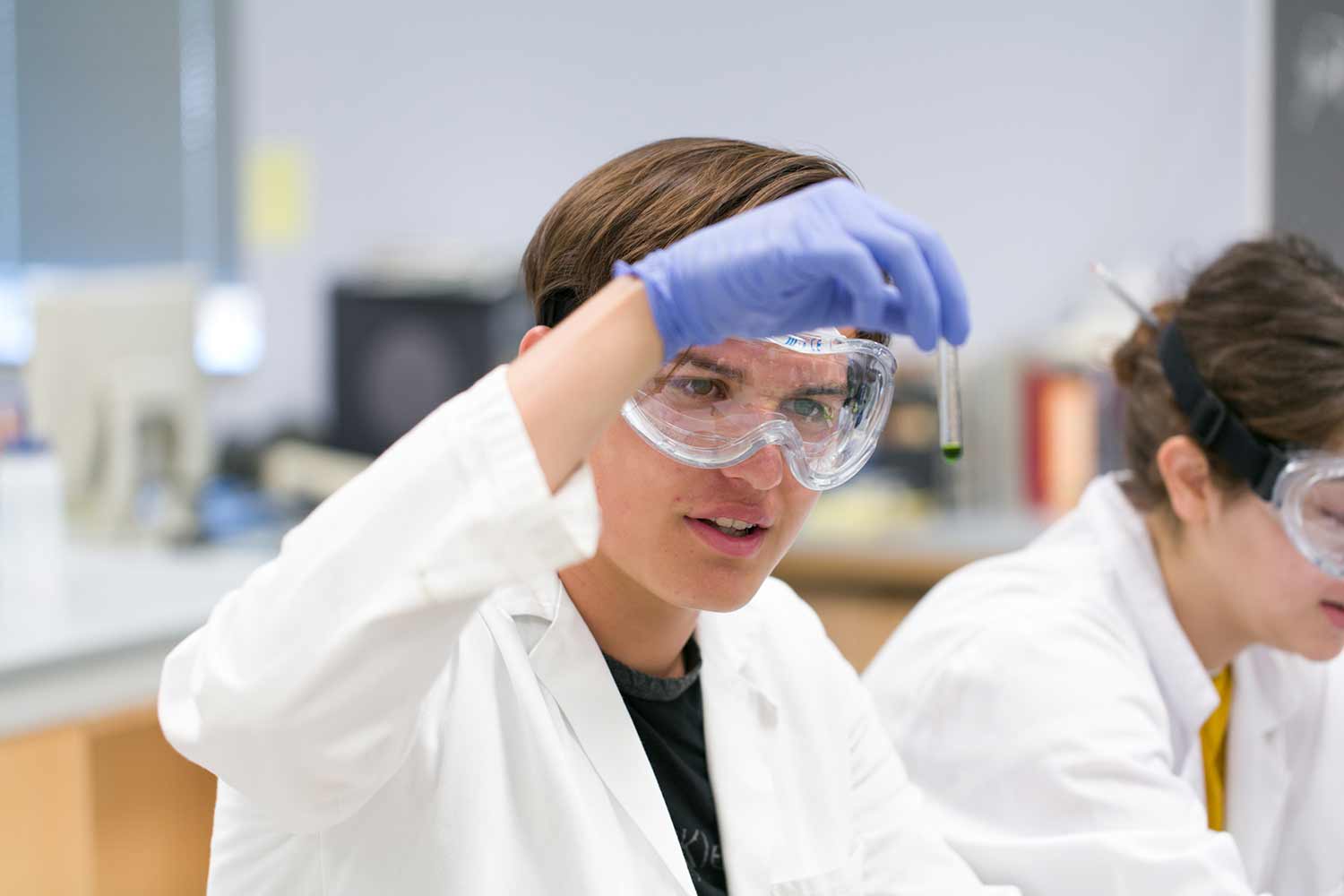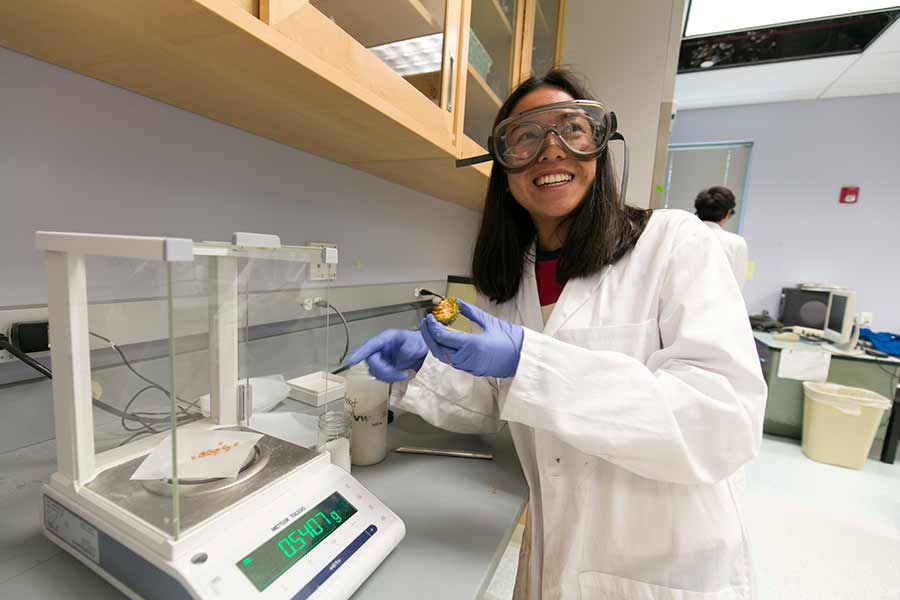
By:
- Christina Johnson
Published Date
By:
- Christina Johnson
Share This:

Aaron Valencia of Olympian High School in Chula Vista prepares a plant extract sample for analysis. He spent a week in July at UC San Diego as part of the Californian Shaman program. Photos by Kyle Dykes/UC San Diego Health
“Californian Shaman” High School Students Explore Plants, Medicine and More
As the high school students hiked along the nature trail at Scripps Coastal Reserve, José Waterton, a doctoral student in plant ecology at UC San Diego, pointed out native species like telegraph weed, California sagebrush and California buckwheat along the way and explained the ecological disturbances caused by invasive plants, such as ice plant and wild mustard.

Students participating in the Californian Shaman program at UC San Diego hold plant specimens collected from the Knoll at the Scripps Coastal Reserve. (L to R) Sarah Estaris, Alyssa Dauz, Jessie Lee, Katelin Tanjuaquio and Isela Lopez.
The guided hike through this gem of the UC Natural Reserve System was the first activity of a weeklong science program for students called Californian Shaman. With a hands-on approach that starts in the field, students learn about native plants, their traditional uses by the Kumeyaay tribal band and modern analytic techniques for studying plant compounds of interest.
“Indigenous people made a drink with the berries from this shrub,” Waterton said, pointing to lemonade sumac. “They lined the floors of their homes with Artemisia californica (California sagebrush) to keep insects away. Tea was made from Nuttall’s snapdragon for colds.”
Waterton, who studies the evolution of germination in California native and invasive plants in Elsa E. Cleland’s lab reminded students to collect samples from plants they found interesting.
One student selected a piece of telegraph weed “because I have never heard of such a thing.” Another plucked a piece of ice plant, covered in shimmering water-filled bladder cells. “Now I know why it’s called ice plant,” she said.
After the hike, the students took their plant specimens to a UC San Diego chemistry lab where, for the rest of the week, they extracted compounds, learned about their molecular structures and presented their findings under the guidance of synthetic organic chemist, Dionicio Sigel, an associate professor and co-director of the Center for Compound Resources at the Skaggs School of Pharmacy and Pharmaceutical Sciences.

Jenna Angeles of Olympian High School in Chula Vista analyzes plant extracts as part of the Californian Shaman program at UC San Diego.
Siegel created the “Californian Shaman, a Study of the Chemistry and Conservation of Native Californian Plants” to encourage and mentor the next generation of young scientists, particularly those from communities under-represented in the sciences.
“What we are trying to do is get students engaged and excited about science, and to show students that science is driven by their own inquiry,” he said. “We developed the program to help students appreciate the impact of science on their lives, gain self-confidence, understand the importance of native plant conservation and experience the spectrum of scientific disciplines at research-intensive universities such as UC San Diego.”
Scientific inquiry isn’t limited to plants.
Siegel encouraged students to bring in “your mother’s shampoo or anything else from home that you find interesting.” He had just explained how sunblock works and was passing out samples of sunblock for students to analyze.
Californian Shaman is an adaptation and continuation of the Texas Shaman program Siegel launched while he was a professor at the University of Texas in Austin. In many ways, the shaman theme parallels his professional career in medicinal chemistry, as his research is focused on synthesizing therapeutically promising compounds from the natural world.
“About half of all drugs have some basis in natural products,” Siegel said.
His lab is currently developing synthetic routes for producing fungal metabolites shown to override cell signaling that normally inhibits spinal cord repair. The metabolites, he explained, trigger damaged axons to reach out, seek each other and reconnect.
Alexis Guzman, an incoming senior at Olympian High School in Chula Vista, noted that she was already interested in both chemistry and conservation. She said she hopes the Californian Shaman program would help her find her niche. “Science is very broad,” Guzman said. “I hope to narrow down my choices.”
This summer, Siegel lead multiple groups of San Diego high school students and teachers through the weeklong program. He said he hopes to stay connected with students who are interested in joining UC San Diego research groups.
“I have been inspired by conservation and learning about different plants,” Guzman said. “With the nature hike and lab experience, I feel I have started my journey in science.”
Share This:
You May Also Like
Stay in the Know
Keep up with all the latest from UC San Diego. Subscribe to the newsletter today.


